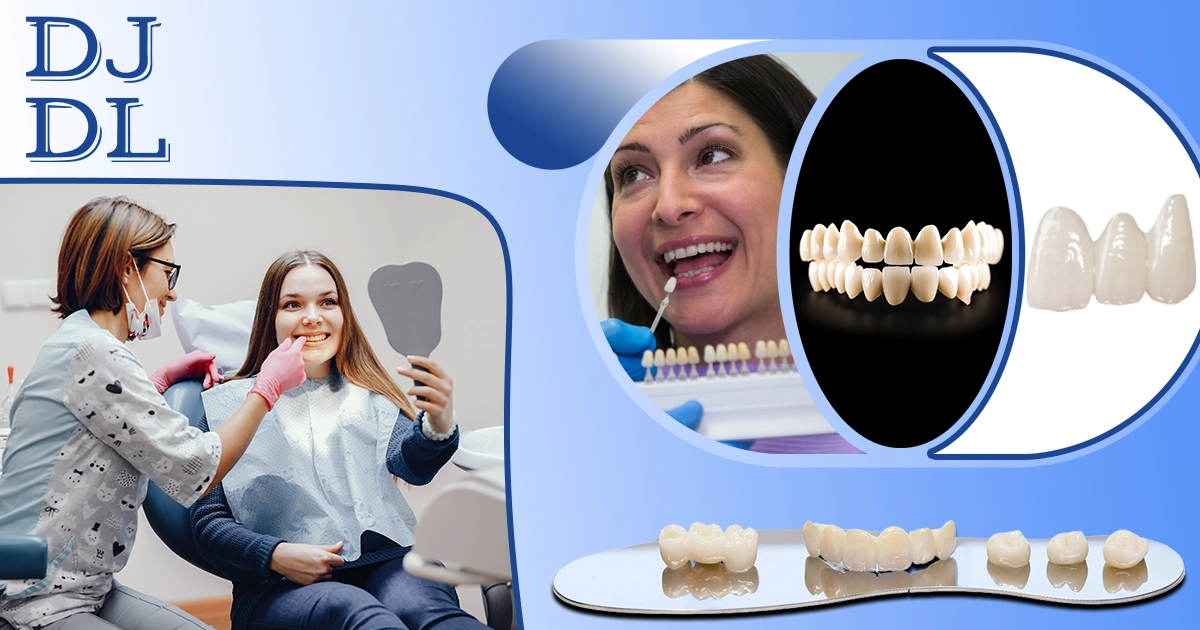
Layered Zirconia: Strength and Aesthetics Combined.
Layered zirconia represents a remarkable advancement in dental technology, offering a compelling combination of strength and aesthetics. It is a type of ceramic material that has long been valued in dentistry for its exceptional durability and biocompatibility. Zirconia’s strength and the aesthetic versatility of layered ceramic allow for the creation of dental restorations that are durable and visually appealing. Patients can enjoy the confidence of knowing their restorations are strong enough to withstand the rigors of daily use while also achieving a natural, lifelike smile. Layered zirconia represents a significant advancement in modern dentistry, offering patients the best of both worlds: strength and aesthetics combined. It addresses this issue by combining the strength of zirconia crowns with the aesthetic versatility of layered ceramic restorations. Here’s how it works:
- Zirconia core: The foundation of layered zirconia restorations is a high-strength zirconia core. This boasts impressive mechanical properties, including high fracture toughness and resistance to wear. This core provides the restoration with its structural integrity and durability, making it suitable for use in various dental applications, such as crowns, bridges, and implant-supported prostheses.
- Layered ceramic: To achieve lifelike aesthetics, a layer of aesthetic ceramic is applied to the surface of the zirconia core. This ceramic layer can be customized to match the shade, translucency, and surface texture of natural teeth, ensuring a seamless blend with the patient’s smile. Dental technicians carefully layer and sculpt the ceramic to create a restoration that closely mimics the appearance of natural tooth enamel.
- Bonding: The layered ceramic is bonded securely to the zirconia core using specialized dental adhesives and bonding techniques. This ensures the two materials remain firmly attached, providing long-lasting stability and preventing delamination or fracture.
Achieving Natural-Looking Restorations with Layered Zirconia.
Achieving natural-looking restorations with layered zirconia involves a combination of advanced materials, precise techniques, and artistic craftsmanship. With the strength of zirconia and the esthetic dentistry of layered ceramic, dental professionals can create restorations that not only restore function but also enhance the beauty of the patient’s smile. Here’s how dental professionals achieve life-like results:
- Shade selection: The process begins with selecting the appropriate shade of zirconia and ceramic to match the patient’s natural teeth. This involves careful consideration of factors such as tooth color, translucency, and surface texture. Advanced shade matching systems and digital technologies can aid in this process, ensuring a close match to the patient’s existing dentition.
- Customization: Dental technicians meticulously layer and shape the ceramic on the zirconia core to replicate the natural anatomy of the tooth. This includes creating subtle variations in color, opacity, and translucency to mimic the appearance of natural enamel. The technician’s skill and attention to detail are crucial in achieving seamless integration with the patient’s smile.
- Surface texture: Replicating the surface texture of natural teeth is essential for achieving lifelike restorations. Techniques such as micro-texturing and glazing are used to create the subtle surface irregularities characteristic of natural enamel. This helps the restoration interact with light in a way that closely resembles natural teeth, enhancing its aesthetic appeal.
- Translucency: Layered zirconia restorations are designed to mimic the translucency of natural teeth, allowing light to pass through the restoration like natural enamel. This translucency is achieved through the careful layering of ceramic materials and the use of translucent stains and glazes. The result is a restoration that exhibits a natural, vibrant appearance, even in different lighting conditions.
- Individualization: Each restoration is custom-made to suit the unique characteristics of the patient’s smile. This includes considerations such as tooth shape, size, and alignment, as well as the patient’s facial features and smile aesthetics. By tailoring the restoration to the individual patient, dental professionals can ensure a natural-looking result that complements the overall harmony of the smile.

